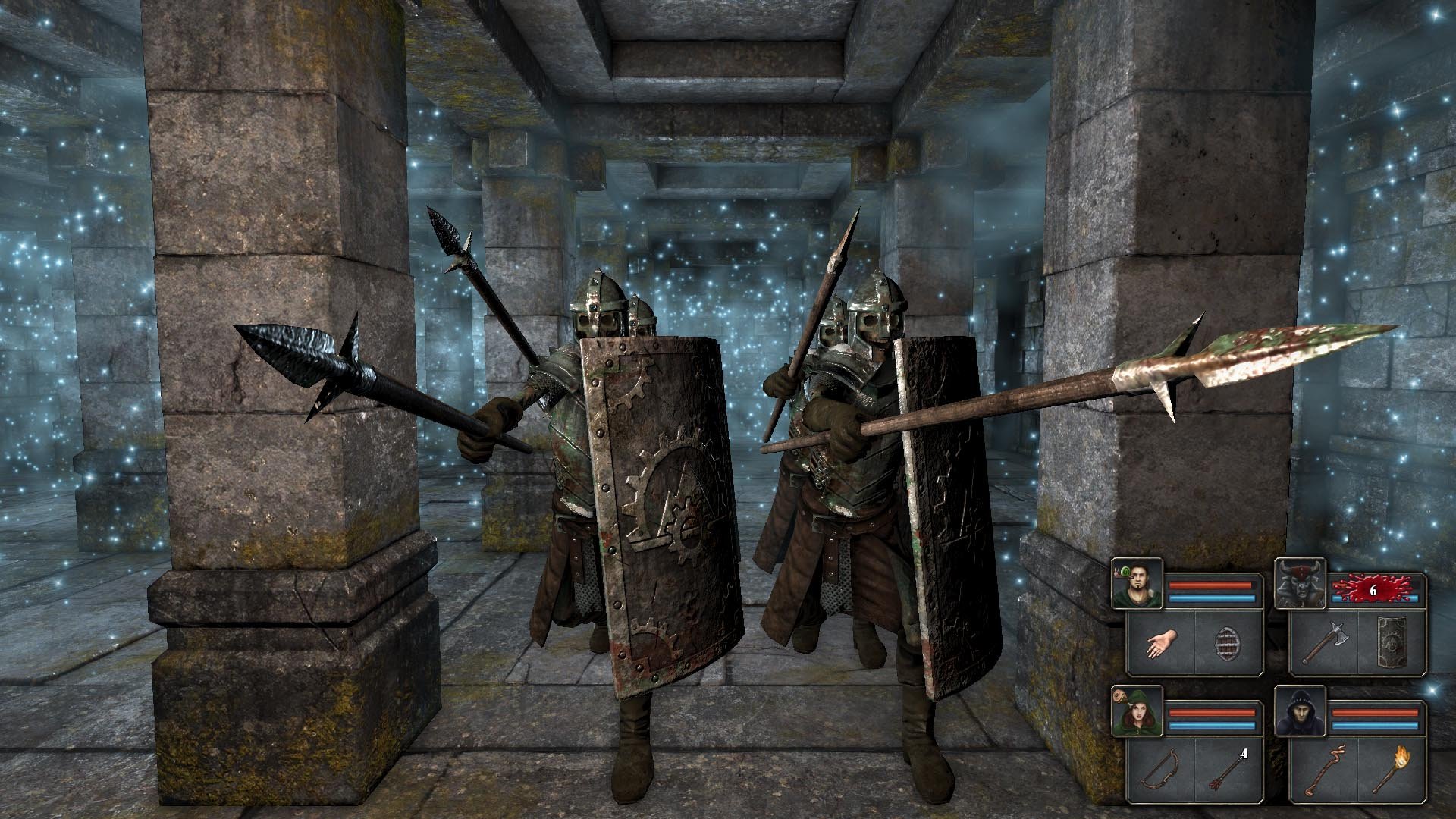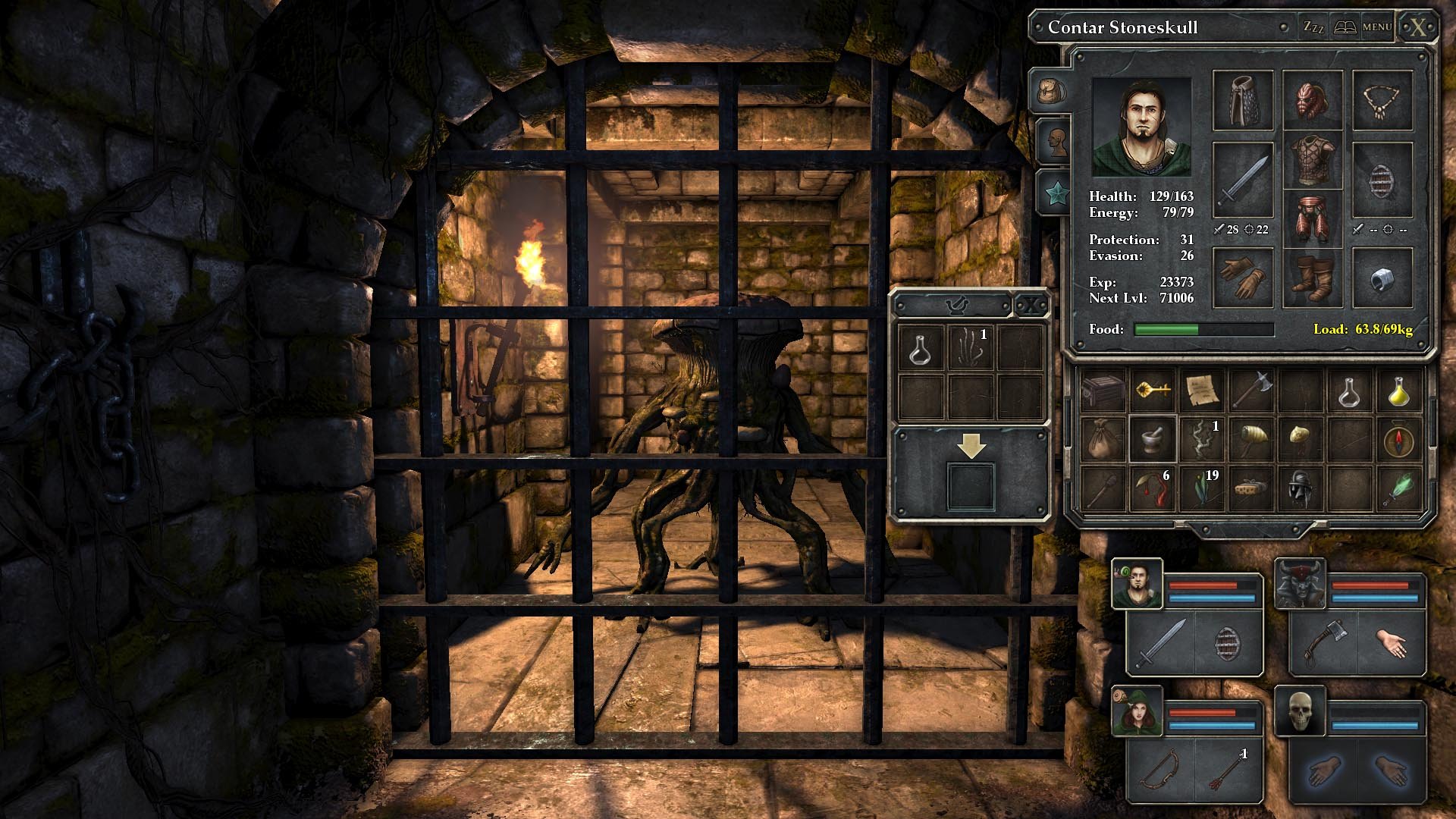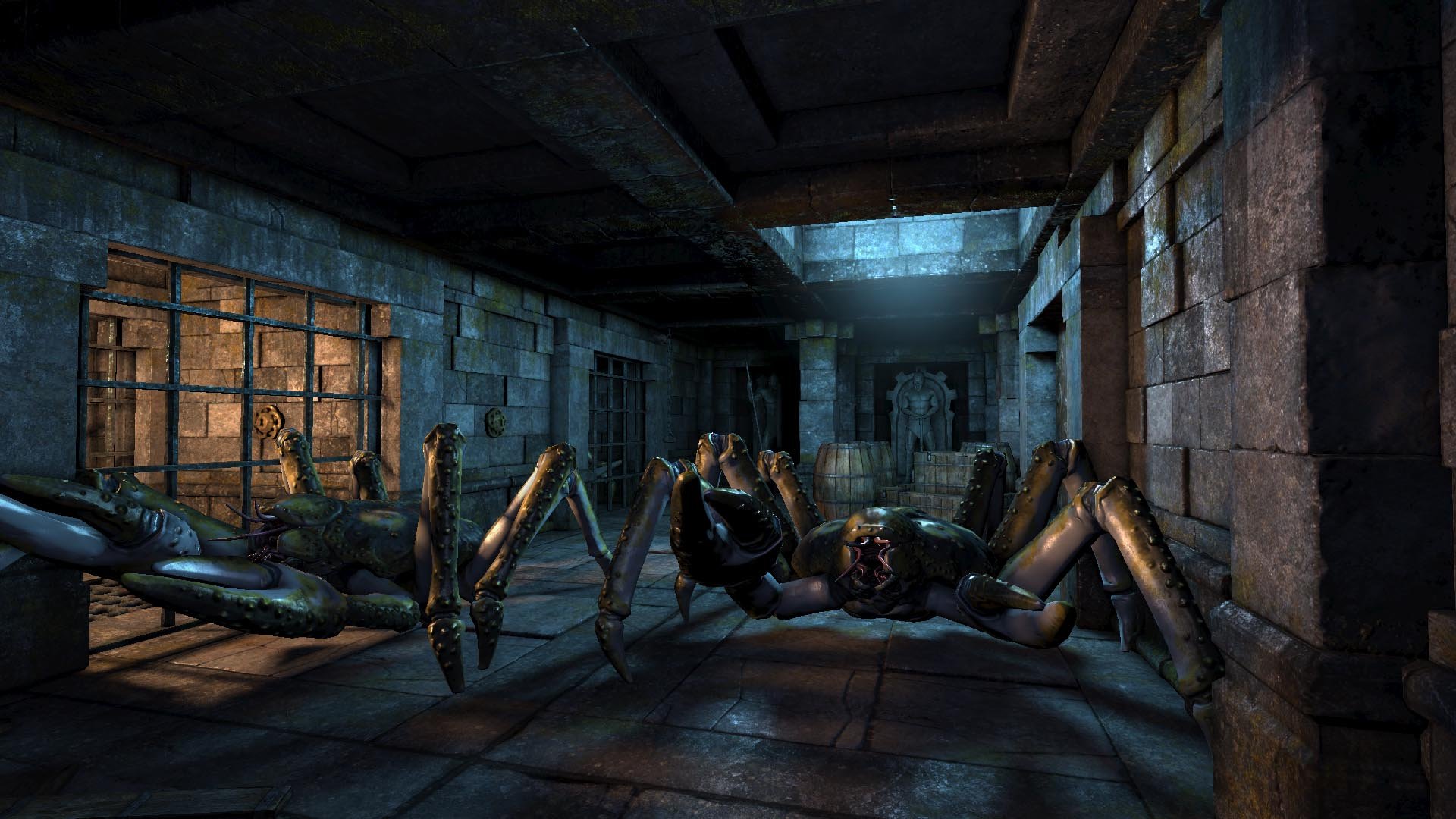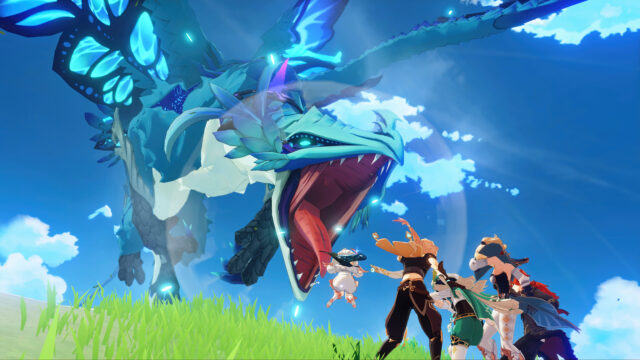Legend of Grimrock Review
The square is a beautiful shape that is criminally neglected in modern game design. The square is reliable and stable. Its boundaries are clearly defined, and if you enter a square, you will always know exactly where you are. In the pursuit of increasingly detailed game environments, the simple beauty of straight angles and lines has been lost.
Legend of Grimrock is a very “square” game. And don’t let the first-person view deceive you. This time, you won’t be killing monsters in circles. It’s a dungeon, a role-playing game in its classic sense, where you need to create a party of four characters and then guide them through a dark labyrinth, picking up everything that lies in your path and killing one monster after another. There are no characters to romance, no side quests, no tasks at all. Your goal is simple and as clear as the squares that make up the labyrinth map – you must escape.
Moving on the map is simple. Step forward and you will move to the next square. Press the side or back movement button and your character will repeat the movement. Rotation is done by turning 90 degrees. You will always know exactly what you can do, but don’t think that this makes the game a simple walk from point A to point B. At the very beginning, you can choose the so-called Old School mode, which disables the map and puts the responsibility for tracking progress on your own shoulders (one step – one square). “Arm yourself with a ruler and pencils,” the game suggests, “and be prepared to get lost.”

The interaction is as simple as movement: everything your character needs to do is done through intuitive controls of “point and click”. Items are easy to pick up and transfer to empty inventory slots or place in a backpack. Moving them is also easy. Click, take, move, release. When you find a mortar and pestle, you can brew potions. Place a flask and the corresponding herbs in the mortar window (of course, squares) and a potion will appear.
When the cell in front of you is occupied by typical RPG enemies like giant snails, skeletons, and spiders, you right-click on the weapon equipped by your party members to strike back. It becomes a bit more challenging when multiple enemies appear, and here the geometric structure of the game may seem limiting by modern standards. You can easily be surrounded and attacked from all sides, and it will not be easy to escape from a dangerous situation. And it’s not even about the game itself, rather you will have to retrain your fingers, accustomed to a joystick, to the combat style that has long gone out of fashion. The satisfaction you will get when you outsmart a group of armored skeletons is worth the effort.
Ranged weapons – stones, knives, shurikens – can be thrown, and using a bow is as simple as holding arrows in the other hand. Magic is less intuitive, it requires special skill points in corresponding specializations, as well as special combinations of runes that need to be selected before using a spell. It’s not very convenient, but the effect is so powerful that protecting your mage becomes a priority task (as always).
To rest after battles, press R, and you will be able to restore health and stamina, but this is not always possible. It’s not as difficult as in Dark Souls, but the game belongs to the type where you can easily corner yourself through poor inventory management, poorly chosen party, or wrong choices on the skill tree.

LoG masterfully plays with light and darkness. Don't forget to take enough torches with you - they will eventually burn out and leave you in the dark.
In accordance with the general approach to game creation, the skill tree for each of the familiar classes (warrior, thief, mage) is fairly simple but requires some thought. The most powerful abilities are hidden at the top of each tree, but you will receive new levels rarely, so you won’t be able to max out everyone. Becoming a jack-of-all-trades means losing power, while specializing in one thing (only swords or only fire magic) risks putting you at a disadvantage in battle. It’s difficult, sometimes a little unfair, but it’s a game where the player is never protected from the consequences of their own choices. Like in a tabletop RPG, you just have to roll the dice and try to get the most out of what you’ve chosen.
Although in essence, Legend of Grimrock is more focused on puzzles than on brawls. The story can be summed up in a couple of lines – you were mistakenly thrown into a prison located in the depths of a mountain, and from time to time, a mysterious voice guides you. Even battles, no matter how important they are to the game, ultimately turn out to be just a prologue to the next locked door. And here, in a dead end, the game starts flexing its muscles, and you will hunt for hidden keys, solve encrypted puzzles, or simply count walls and floors to find hidden levels, shifting panels, or buttons. It all starts out fairly simple, but soon you’ll find yourself scratching your head at the sight of another dead end, while desperately trying to resist the urge to go to YouTube for a solution.
The fact that the community has already started filling the internet with hints and walkthroughs clearly speaks to how quickly and decisively Legend of Grimrock has found its place in the gaming landscape. It’s the kind of game that owes its existence to the new era of digital publishing – a game for a forgotten niche, created by talented fans for fans just like them. The systems and rules of “Legend” are understandable to everyone, but if the words “Eye of the Beholder” mean nothing to you, its charm will be harder to grasp.

Forget about boring gnomes and elves. You can take a minotaur, a lizard man or an insectoid into your squad.
The Finnish indie studio Almost Human has wisely managed its resources. The game looks good, but you can notice where they saved time. Wall textures and objects are constantly repeated, and monster animations are copied, so as you get closer, large groups look like infernal dance collectives. But that’s not important. All of this doesn’t seem so much cheap and repetitive as it helps to focus on the important things. You will only be confused or unsure about what is happening when the developers themselves want to confuse you. The environment – visually and audibly – will be a series of instinctively understandable hints that will guide you.
“Legend of Grimrock” walks a fine line with astonishing confidence. Its categorical adherence to 90s design shamelessly awakens nostalgia, but at the same time, there is no feeling that it is using it for its own benefit. Many indie projects that were inspired by retro games fall into this trap: they allowed the past to mask design flaws. “Legend” does not do this. It reminds us that old tricks still have their value, but its thoughtful construction and good balance guarantee that it can confidently stand on its own in 2012 and justify its existence.
Middle-aged RPG enthusiasts don’t need any extra incentives to immerse themselves in “Legend,” but for newcomers who are discovering the genre through huge epic canvases like Skyrim, its “square” reliability will be a breath of fresh air.
Share
Discuss
More Reviews





